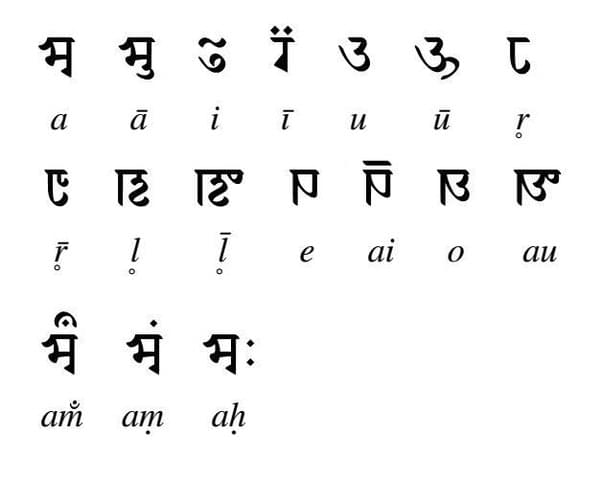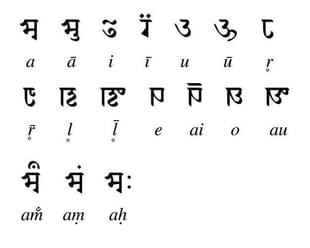Culture
How Long Can The Sharada Script Be Kept Alive?
Kamalpreet Singh Gill
Dec 23, 2017, 08:24 PM | Updated 08:24 PM IST
Save & read from anywhere!
Bookmark stories for easy access on any device or the Swarajya app.


Unless, we do something about it.
Researchers at the University of Oxford made a fascinating discovery earlier this year. A birch manuscript, known to contain one of the earliest references to the numeral zero, was found, through the use of advanced radiocarbon dating techniques, to be 500 years older than was previously thought. Known as the Bakhshali manuscript, it contains a detailed treatise on fairly advanced mathematical concepts including arithmetic and geometric progressions, algebra including quadratic equations, and geometry. First discovered in the year 1881 in the village of Bakhshali in the Khyber Pakhtunkhwa region of present day Pakistan, the manuscript was believed until now, to have been composed in the 8th century A.D. However, latest work at the Bodleian Library at the University of Oxford – where the manuscript is currently housed – has dated the manuscript to as early as the 3rd century A.D.
So far this discovery of the correct age of the Bakhshali manuscript has raised an exciting set of questions about the knowledge of ancients about the numeral zero. The numeral zero, taken for granted by us today, represented a huge conceptual leap for the ancients, and researchers believe that the philosophical complexity of early Indic schools of thought, with their intense deliberations on the notion of the void or ‘shunya’, may have laid the groundwork for the discovery of the mathematical concept of zero. However another, and equally exciting set of questions that this pre-dating of the Bakhshali manuscript poses for historians and linguists relates to the origins and prevalence of the ancient Sharada script in which the Bakhshali manuscript is written. Since the manuscript itself was believed to be one of the oldest works in Sharada, our knowledge of the prevalence of the script too gets pushed back by almost 500 years.
The Sharada Script
Sharada is an early Indic script that links the ancient Brahmi – believed to be the oldest script on the sub-continent - to the modern languages of the of the Indian subcontinent. It was in use throughout most of the north-western part of the Indian subcontinent from the 5th to the 10th centuries AD when the older Brahmi and the Kharoshti scripts began to fall in disuse. Sharada inscriptions have been found as far as Drass, Gilgit, and Baltistan to the north whereas to the north-west, several statues of Hindu deities have been uncovered in Afghanistan that contain Sharada inscriptions. Coins belonging to the Hindu Shahi kings of Kabul dating to the 7th century AD have also been found to contain inscriptions in Sharada. These statues and inscriptions indicate that towards the end of the Gupta period, Sharada was beginning to replace Brahmi and Kharoshti as the preferred script for writing Sanskrit in the north-western part of the Indian sub-continent.
Sanskrit, though an ancient language itself, has been written throughout history in almost all Indian scripts. One of the first written records of Sanskrit has been in the Brahmi script. The almost exclusive association of Sanskrit with the Nagari script in our times is a much more recent phenomenon, dating to the late 19th century and the flourishing of the printing press in colonial India. The Nagari script itself has been a descendant of Brahmi, through the intermediate Gupta and Sharada scripts. Most linguistic trees of Indian scripts place Brahmi at the head, followed by the Gupta script, with regional scripts like Sharada (in the north-west), Siddhamatrika (in the east), Tamil-Brahmi & Pallava ( in the south) branching off at the next step around the 7th century A.D. However, the new findings regarding the age of the Bakhshali manuscript could raise interesting questions about this timeline, and the period at which each script first appears in history.
The Legacy of Sharada
The contemporary importance of Sharada arises from the fact that it is the immediate predecessor of several modern Indian scripts. Of these, the most important is Gurmukhi, which is today used to write Punjabi. From the 10th to the 14th century AD, the Sharada script morphed into a number of allied scripts in the Punjab region, such as the Lahnda and the Mahajani which were used for recording mercantile transactions but were not very popular. In the early 16th century, the second Sikh Guru, Guru Angad Dev, adapted the Sharada script, along with its local variants like the above mentioned Lahnda and Mahajani, to devise the Gurmukhi alphabet, which became the script in which the Sikh holy scripture, the Guru Granth Sahib, was eventually composed, and which later became the medium for preservation of the Punjabi language. (Daniels, pg 395)
In the adjoining hills of Jammu and Himachal, Sharada morphed into the Takri script which was sporadically used to write the local hilly dialects broadly classified as Dogri and Pahari. In Chamba state for instance, Takri was used as an official script until the creation of Himachal Pradesh and the adoption of Nagri as the de facto script. The Chamba state even set up a printing press in Ludhiana in 1881 AD for printing literature in the Takri script for the local Chambiyali dialect. The Gospels of St. Mark, St. John, and St. Mathews were translated into Chambiyali dialect and printed in Takri script at this press.
Further to the north in Kashmir, Sharada was adopted as the standard script for writing the Kashmiri language until the establishment of Islamic rule in Kashmir and the gradual adoption of the Perso-Arabic script as the de facto system for writing Kashmiri. With time, the goddess Sharada, better known as Saraswati, became the patron deity of Kashmir and Kashmir became renowned all over Asia as a centre for learning and the arts. In adjoining Tibet, as Buddhism spread via the Silk Route from India to the east, a need was felt to preserve Sanskrit text and mantras in writing and the Chinese language was found to be unsuitable for the purpose. According to Tibetan tradition, a monk named Thonmi Sambhota was sent to India in the 7th century A.D. to learn the Indic system of writing and bring it to Tibet. It is believed that Thonmi Sambhota went to Kashmir and after learning the script prevalent there, believed by various sources to be either Siddham or a late Gupta script, both related to Sharada, used his knowledge to compose the Tibetan alphabet. (Steinkellner & Tauscher,pg 209). The new findings regarding the age and prevalence of the Sharada script could also perhaps lead linguistic scholars to reconsider the question of which Indic language was the progenitor of the Tibetan alphabet.
A Dying Script
From its wide geographical presence in its heyday, covering all of Afghanistan, Pakistan, parts of the Tibetan plateau and north-west India, the Sharada script is on the verge of dying out. Today it is used only by a small section of Kashmiri Pandits, and that too for ceremonial purposes. The state language of Jammu and Kashmir remains Urdu written in the Perso-Arabic script, while in the Jammu region, Dogri has accepted the Nagri script for its written form. It is lamentable that even in its former abode of Kashmir, where it perhaps flourished for the longest, Sharada finds no official patronage.
As one of the oldest surviving scripts of India, Sharada deserves greater attention to preserve it. Languages are more than mere media of communication; they are carriers of culture, history, and ethos of a people and their civilisation. When the ancient Brahmi script was lost in the medieval ages, it took an Englishman, James Prinsep, to decipher it and to remind India of its past glory that had remained lost to it for over a millennium. The latest findings about the Bakshshali manuscript put the age of the Sharada script to at least 1800 years, making it one of the world’s oldest scripts still in use. It becomes our collective responsibility to ensure that this ancient script does not die out with us.
Note: This article is based on Contributions on Tibetan Language, History and Culture Vol-1, by Ernest Steinkellner and Helmut Tauscher; and The World’s Writing Systems, by Peter T. Daniels and William Bright.
Kamalpreet Singh Gill is a regular contributor to Swarajya. His areas of interest include history, politics, and strategic affairs. He tweets at @KPSinghtweets.





